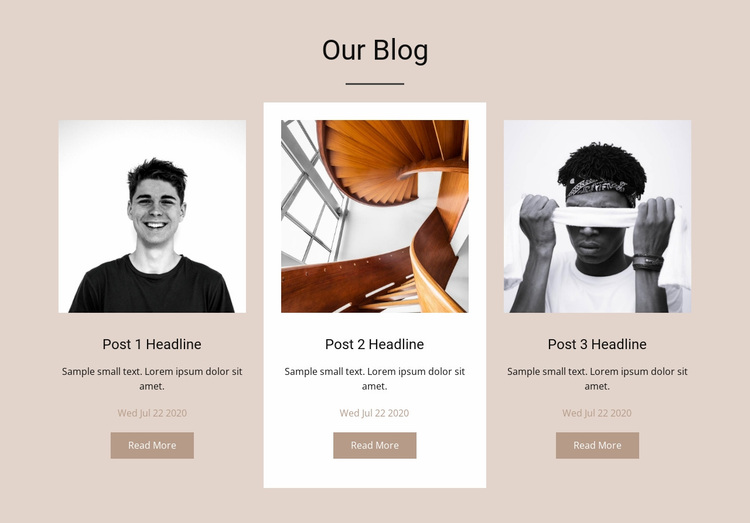Advanced Website Design with Focus on Functionality
Wiki Article
Leading Tips for Producing an Impactful Internet Site Design That Converts
To accomplish this, one must take into consideration a selection of variables, consisting of recognizing the target audience, prioritizing customer experience, and enhancing for mobile platforms. The calculated usage of compelling call-to-actions and a distinct aesthetic hierarchy plays an essential role in leading users through their trip.
Understand Your Target Market
Understanding your target market is essential to efficient site design, as it lays the foundation for developing an engaging user experience. Identifying who your users are, including their demographics, choices, and habits, makes it possible for developers to customize the site's content, design, and capability to fulfill particular demands.Carrying out comprehensive market research is essential in this procedure. Studies, meetings, and analytics can provide beneficial insights into customer expectations and discomfort points. By compiling this data, developers can create individual identities that stand for different sectors of the audience, making sure that layout decisions are educated and relevant.
Moreover, comprehending the target audience aids in selecting suitable style elements such as shade systems, typography, and images that reverberate with individuals. A site that talks directly to its audience promotes a feeling of link and trust, motivating longer visits and higher conversion rates.
Eventually, a user-centered method to web site layout not only improves user contentment but also sustains company goals by driving interaction and commitment. By focusing on the requirements and choices of the target market, a website can efficiently offer its purpose and achieve desired outcomes.
Prioritize User Experience
To improve the total efficiency of an internet site, prioritizing individual experience (UX) is necessary (Website Design). A properly designed UX makes sure that visitors can browse the website effortlessly, locate information quickly, and involve with content meaningfully. This causes boosted customer complete satisfaction and higher conversion ratesBegin by implementing intuitive navigation. Menus should be logically structured, allowing individuals to locate vital locations of the site with minimal effort. Consistency in design components, such as shade schemes and font styles, promotes familiarity, which is crucial for maintaining user engagement.
In addition, think about the filling rate of your web site. A delay of simply a couple of secs can cause considerable drop-offs, as users are much less most likely to await a slow-loading web page. Streamlining images and maximizing code can improve efficiency and maintain site visitors.
By focusing on customer experience, you not only produce an extra enjoyable atmosphere for site visitors yet also strengthen your brand name's reputation. Ultimately, a focus on UX is an investment in the long-lasting success of your site.
Maximize for Mobile Instruments
Optimizing for mobile phones is critical in today's digital landscape, where a raising variety of customers gain access to sites with mobile phones and tablets. A mobile-friendly style not just improves user experience but also plays a significant role in boosting search engine positions. To attain this, it is vital to embrace a receptive style that immediately gets used to numerous screen dimensions and alignments.
Loading rate is an additional crucial element; mobile users are commonly much less client and expect rapid access to information. Maximize pictures and leverage web browser caching to boost efficiency. Examination your site on multiple gadgets and display resolutions to determine and fix any kind of potential use issues. By prioritizing mobile optimization, you make certain that your site continues to be competitive and properly involves a more comprehensive audience.
Use Engaging Call-to-Actions
An internet site's effectiveness often depends upon its capability to lead visitors towards wanted actions, making compelling call-to-actions (CTAs) vital parts of layout. CTAs serve as the pivotal factors that guide customers to involve with the site, whether that suggests purchasing, authorizing up for an e-newsletter, or downloading and install a resource.To develop effective CTAs, clarity is critical. Use concise language that plainly communicates the action you want the customer to take. Phrases such as "Start," "Join Free," or "Shop Now" not only communicate urgency yet also eliminate uncertainty. The positioning of CTAs is similarly crucial; they must be strategically positioned throughout the website to ensure they are conveniently noticeable, particularly in high-traffic locations.
In addition, the design of CTAs ought to stand apart without being noticeable. Employ contrasting shades and clear fonts to guarantee they catch interest. Additionally, consider using directional cues, such as arrowheads or pictures, to direct individuals towards these buttons. By concentrating on these components, services can dramatically enhance user involvement, driving conversions and eventually achieving their site's goals.
Concentrate On Visual Hierarchy
Reliable site layout relies heavily on a next well-structured aesthetic hierarchy that overviews customers with material flawlessly. By organizing components in a manner that prioritizes information, developers can boost individual experience and promote decision-making. This involves making use of size, color, comparison, and spacing strategically to attract interest to one of the most vital parts of a website.The use of larger typefaces for headings and subheadings establishes a clear distinction in between different areas, allowing users to check content easily. Additionally, employing contrasting shades for buttons and calls-to-action can catch individual focus and urge communication. Whitespace is another necessary part; it prevents mess and makes it possible for users to concentrate on essential messages without diversions.
Pictures and graphics ought to wikipedia reference match the text while likewise adhering to the recognized power structure, reinforcing the overall message (Website Design). Consistency in design components, such as color pattern and typography, further enhances the visual hierarchy, making navigating user-friendly

Final Thought
In final thought, reliable web site design demands a comprehensive understanding of the target audience, prioritization of individual experience, and mobile optimization. Ultimately, a well-executed internet site style offers as an important part in driving user activities and achieving organization objectives.Report this wiki page